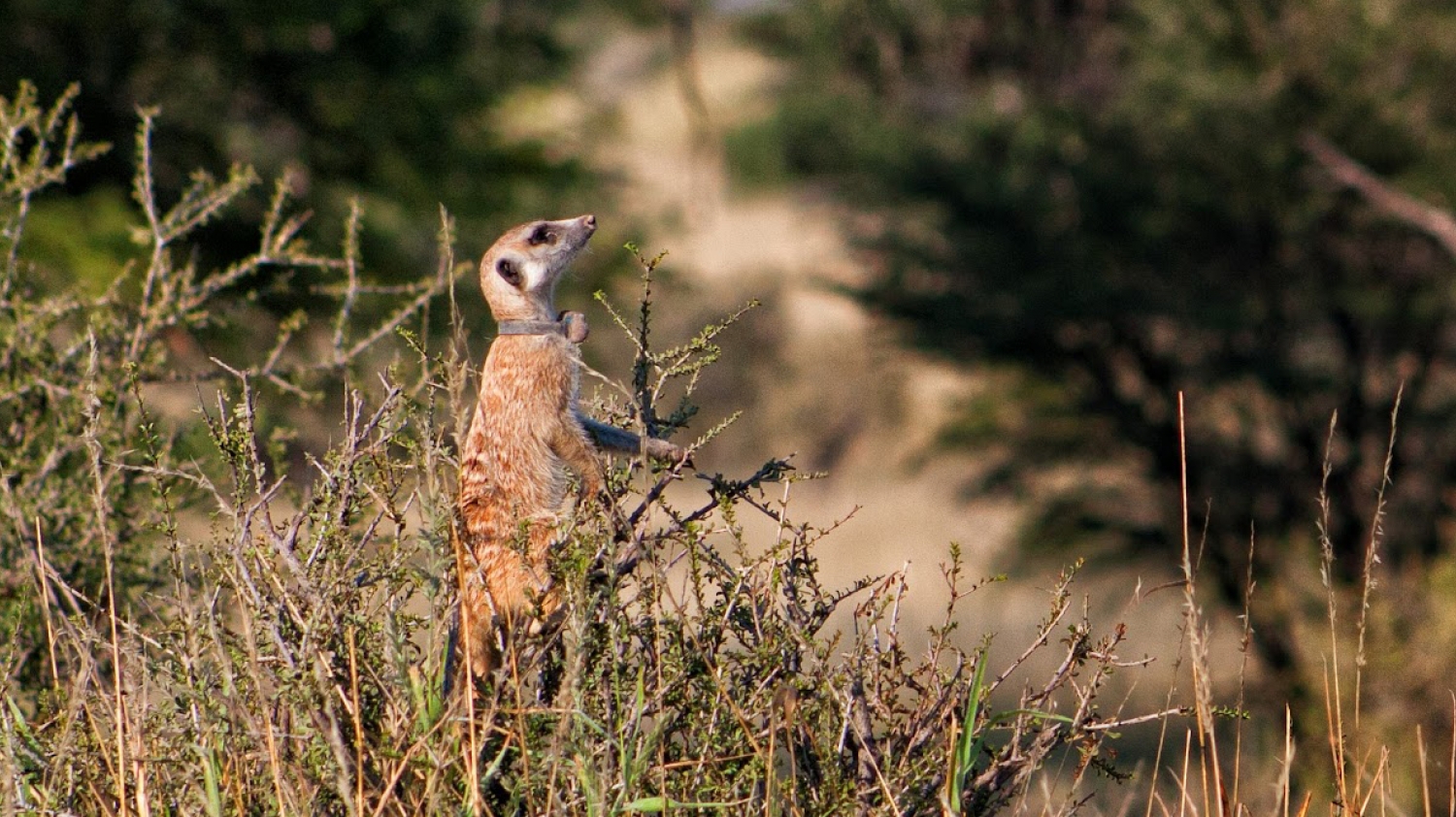Meerkat chit-chat

Meerkats use two different types of vocal interactions to stay in touch with their group mates. Sometimes the call simply broadcasts information, whereas other times meerkats engage in a call exchange with their neighbours, as researchers from the Centre for the Advanced Study of Collective Behaviour at the University of Konstanz and the Max Planck Institute of Animal Behavior present in a new publication published today in Philosophical Transactions of the Royal Society B.
Meerkats are group-living animals which are on the move nearly throughout the whole day. As they are walking or running, they make a continuous series of noises. Researchers have now decoded how wild meerkats use two of the sounds they make. “The first sound, a ‘close call’, is like a call-and-response exchange between the animals”, as postdoctoral researcher Vlad Demartsev from the Cluster of Excellence Collective Behaviour describes. “When one meerkat calls, a neighbour is likely to reply”, he adds. “Whereas the second call, named a ‘short note’, announces ‘I am here’ but doesn’t necessarily get a direct reply from communication partners.”
Quiz question: Listen to the two calls. Which call do you think will get a reply from a neighbour?
Call No 1
Call No 2
Meerkat call
Partners are necessary for an exchange
Imagine a situation of an announcement in front of a big crowd. A lot of information is being transmitted, but it usually goes in one direction, there is no exchange between the speaker and audience. It is impossible to hold a conversation with 20 people, so we normally talk to one partner at a time, explains Vlad Demartsev. Close calls are such an exchange between communication partners and short notes are more like a broadcast or an announcement aimed at the whole group.
Vlad Demartsev and Ariana Strandburg-Peshkin from the Max-Planck Institute of Animal Behaviour and the University of Konstanz, together with collaborators from the University of Zurich, deployed collars on meerkats in several groups at the Kalahari Research Centre in South Africa. The collars recorded continuous audio data and GPS positions were sampled every second. Using these collars, the researchers got a synchronized recording and could see which animal produced which sound at which time and where.
© Vlad DemartsevMeercat with collar.
One meerkat will often find a high lookout spot to watch for threats. While on sentinel it will emit specific calls transmitting the levels of threat to the rest of the group.
Exchange vs broadcast?
Afterwards, the behavioural ecologists prepared one vocal timeline for the whole group and analysed the data. “We saw that when a close call is given, there is a very high probability that within less than half a second a nearby neighbour will respond. But when we have a short note, we do not have this pattern. All of them are calling nearly at the same time and there is no structure”, says Vlad Demartsev. “Ultimately, calls are not just single isolated events, but a continuous stream of communication between group members. So, looking at the temporal structure of the interactions can help us to better understand how calls are used and what their function is,” adds Ari Strandburg-Peshkin.
Staying in a group is crucial for meerkats and they use multiple mechanisms which evolved to avoid getting separated. “When meerkats are by themselves there is a higher chance of predation or harassment by other groups. Generally, meerkats therefore try very, very hard to stay together”, says Vlad Demartsev.
Meerkats are social animals and spend their entire day in a group.
https://www.youtube.com/watch?v=T_m9X9SPuTQ

